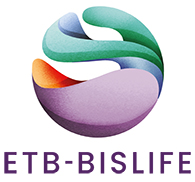Contact
Monday to Friday from 8:30 am to 5:00 pm
General phone +31 (0)23 204 11 00
Storage and use
Storage
The end user is responsible for appropriate storage of the tissue. Before being shipped to the hospital in question, the deep frozen tissue (kept at temperatures < 150 °C) is packaged with an ample amount of dry ice (-80 °C) in a polystyrene box.
IMPORTANT
Cardiovascular tissue is transported under validated storage conditions on dry ice at -80 °C. The tissue has a short shelf life and should be transplanted within 1 week, as it otherwise may lead to irreversible tissue damage and quality deterioration. After delivery, the storage conditions are not monitored by ETB-BISLIFE, so delivered tissue cannot be returned.
The tissue’s shelf life is stated on the packaging and/or the enclosed documents.
NOTE:
Upon arrival in the hospital in dry ice, the tissue should not be stored at temperatures lower than -80 °C under any circumstances (for example in a liquid nitrogen storage container).
This would result in the tissue no longer being suitable for transplantation, as irreversible damage can occur to the tissue due to the uncontrolled formation of ice crystals or the development of cracks in the frozen tissue.
Use
The tissue must be thawed in the operating room just prior to its implantation in accordance with the enclosed instructions. This must be done with care to avoid contaminating or damaging the tissue.
Once the tissue has thawed, the protective medium (dimethyl sulfoxide) must be washed out, as this substance could cause adverse effects in the recipient.
Prior to implantation, the surgeon may choose to modulate the thawed and washed-out heart valve to fit the recipient’s circumstances. This will also allow a final inspection of the valve.
